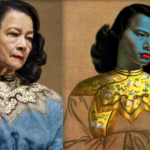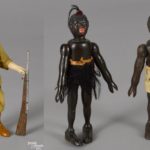It’s amazing what secret treasures museums don’t display. Hidden away in the back rooms of the National Maritime Museum in Greenwich, England are 1000’s of flags used to identify navy vessels and shipping lines throughout history. The museum is constrained by conservation and space resources but they’ve done a very good job of documenting most of them in an online archive I stumbled upon today. Graphic designers, flag lovers, sea voyagers feast your eyes…
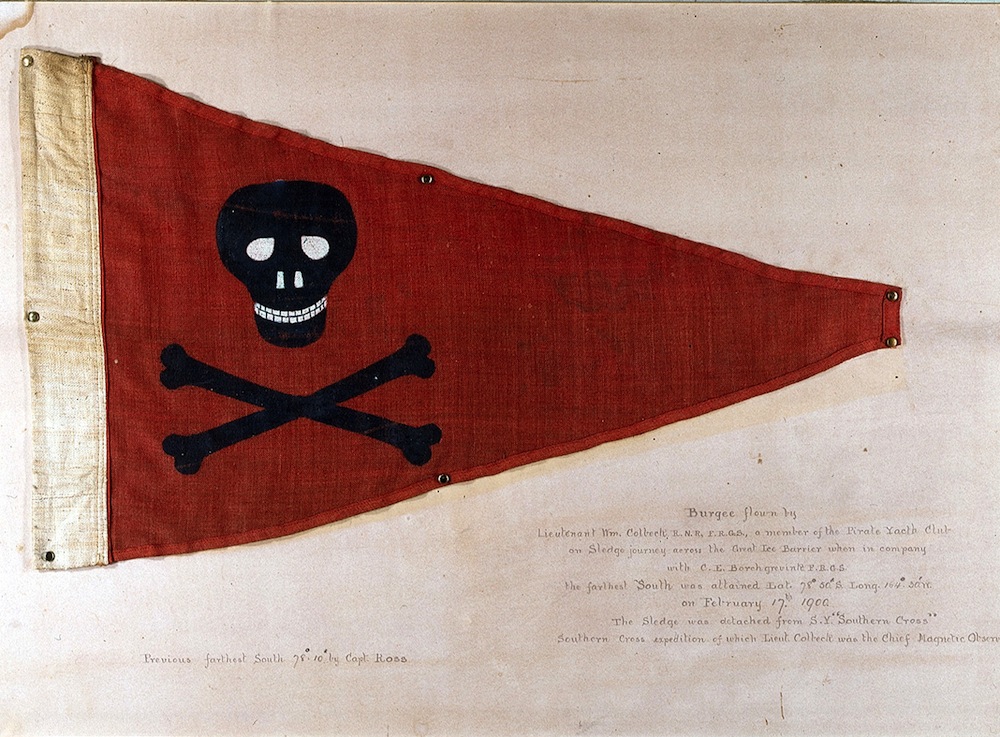
Burgee of the Pirate Yacht Club, Bridlington, used as a sledge flag by William Colbeck RNR on the Borchgrevink Antarctic Expedition 1898-1900, United Kingdom.
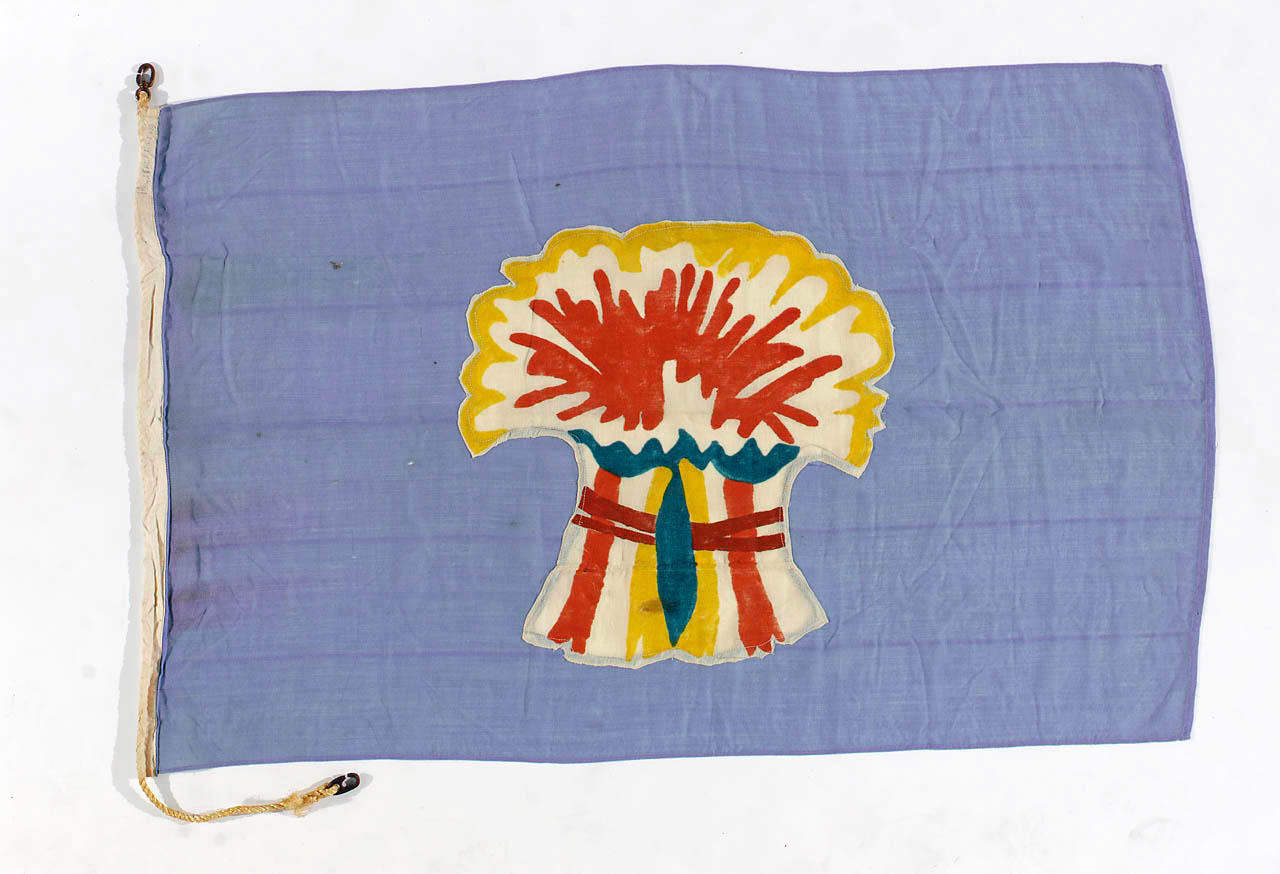
The flag of Sheaf Steam Shipping Co. Ltd, Newcastle-on-Tyne. The company was founded by W. A. Souter in 1906 and named after the Sheaf River that ran through his home city of Sheffield, although the company was based in Newcastle. The company suffered heavy losses during the Second World War and was taken over by Danish shipbuilders in the 1970s.
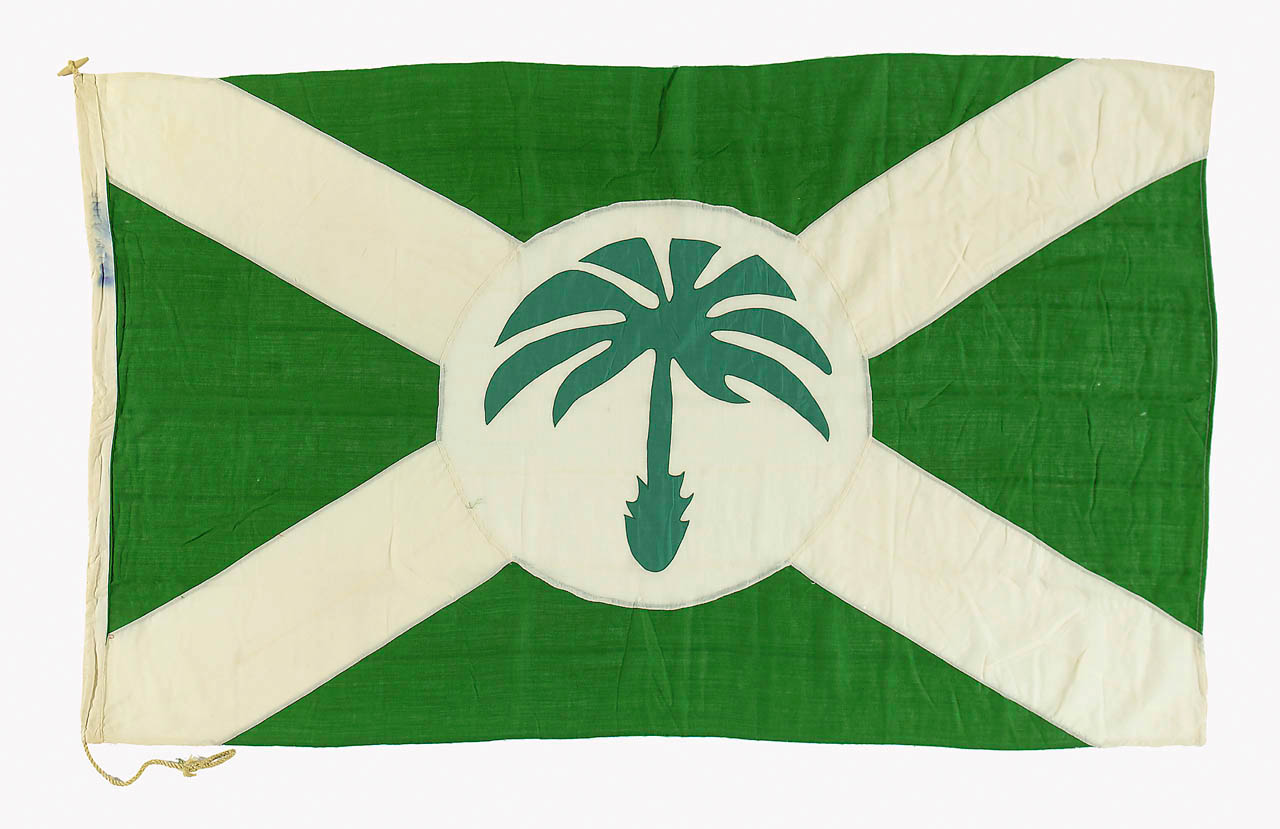
The house flag of the Palm Line Ltd, London. Palm Line was founded in 1949. By the 1960s Palm Line was operating the most modern fleet on the West African Coast, mostly importing palm oil. However economic difficulties in Nigeria and Ghana led Palm Line to reduce its fleet by 50% by 1972. In 1989 the name of Palm Line finally disappeared from the British Registry. The flag is based on the winning entry of a competition organised through the company magazine ‘Progress’ in the 1930s.
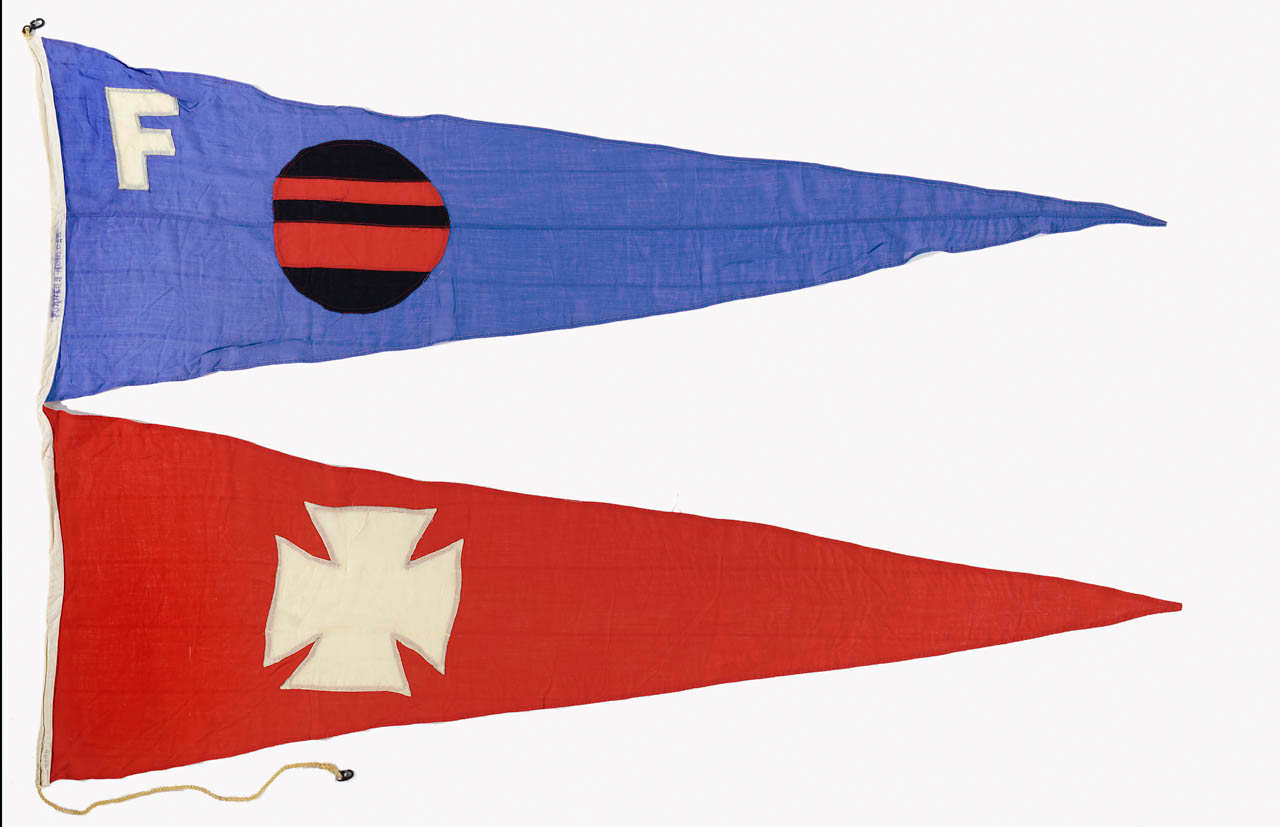
The house flag of Furness Withy & Co. Ltd, London. They commenced shipowning in 1878. In 1990 the company was sold to Rudolf A. Oetker and remains operational as a ship broking business. Flag made circa 1955.
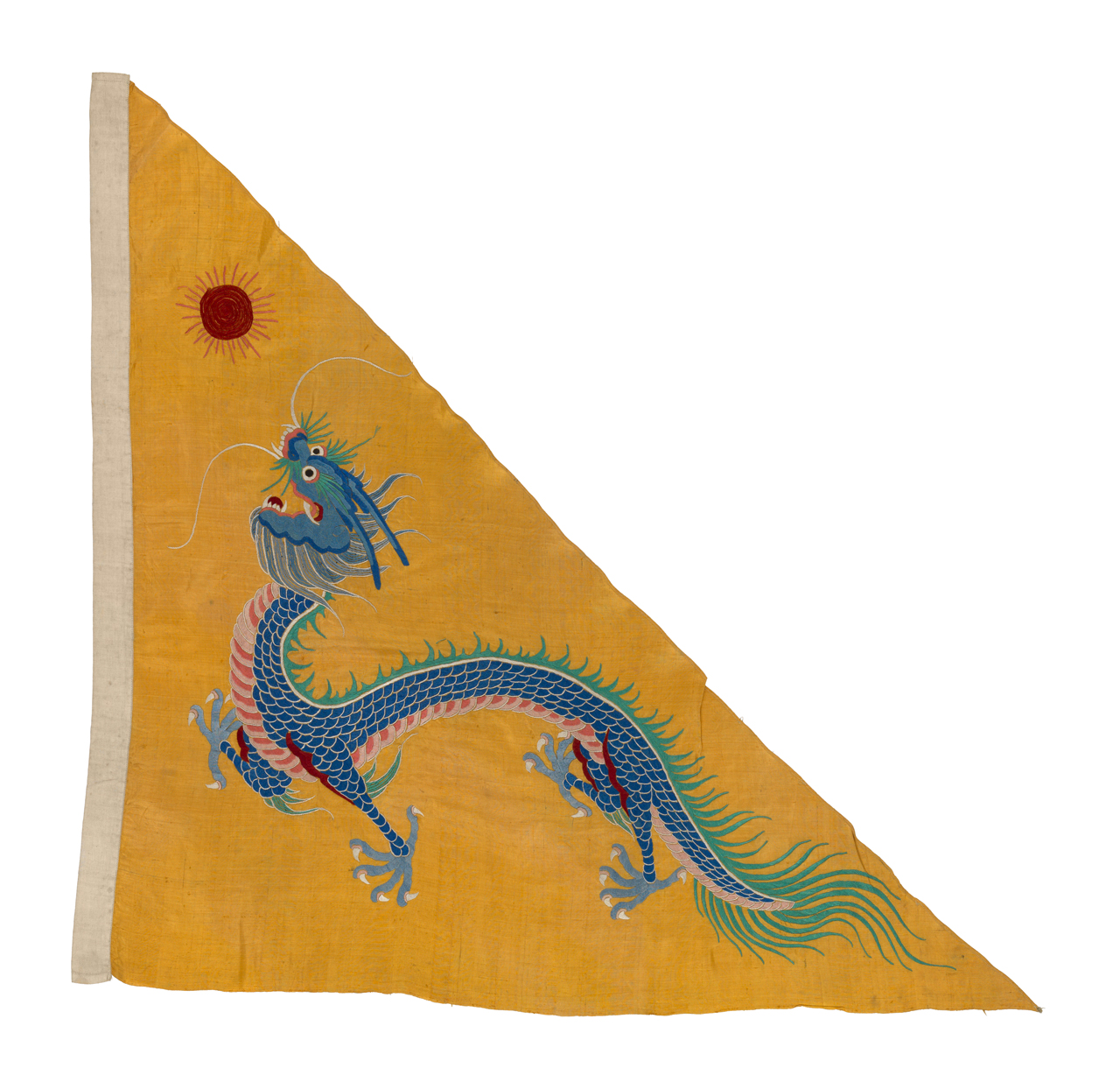
Naval Ensign, Imperial China 1866-1888. A yellow triangular flag with a flying dragon design were used on ships hired for arresting robbers.
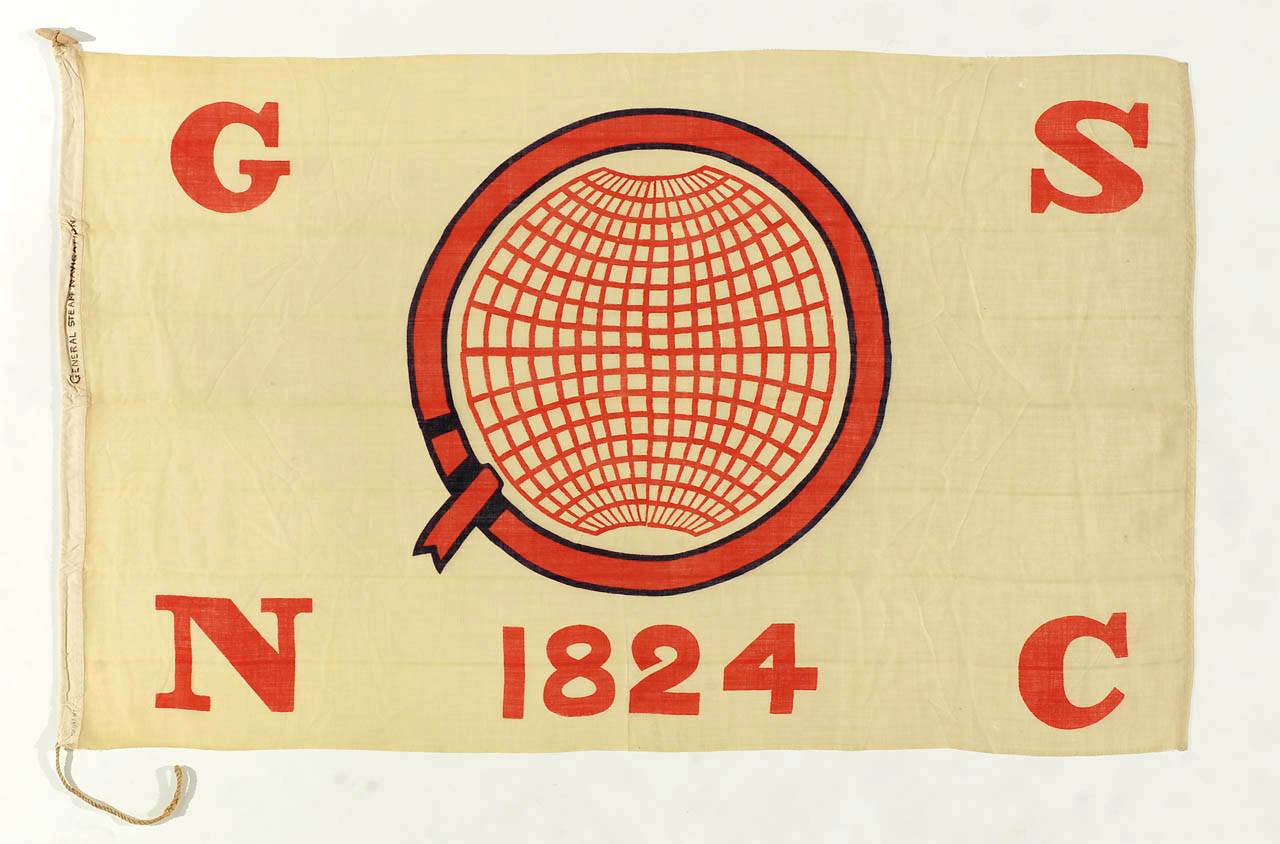
The house flag of the General Steam Navigation Co. Ltd, London. Founded in 1824, it became London’s foremost short-sea shipping line for a century and a half. P&O bought a controlling stake in 1920, but allowed the GSNC to retain its identity. However, the growth of air travel and the disappearance of general cargo vessels in the 1960s took away most of the GSNC’s business, and the firm ceased trading in 1972.
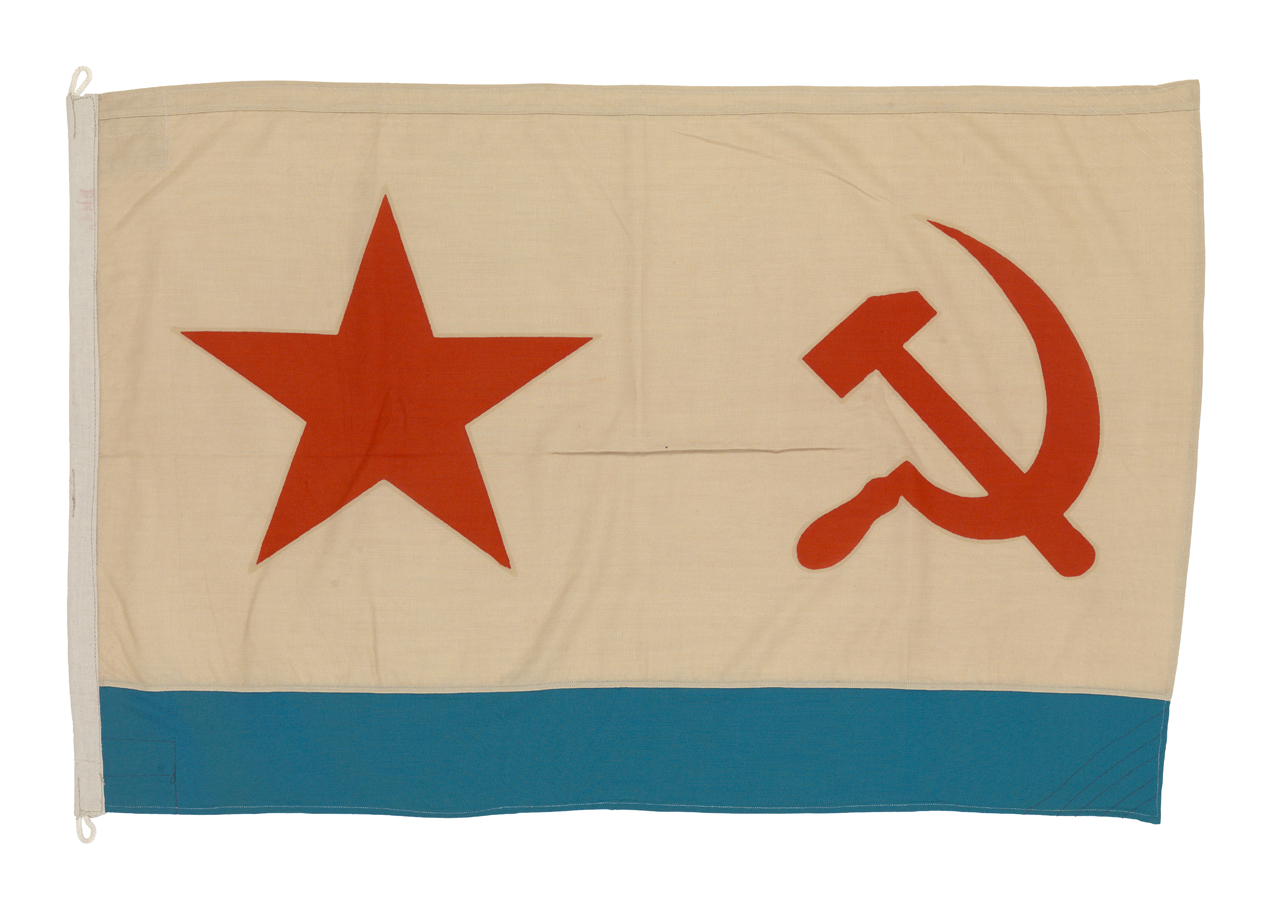
USSR naval ensign in the 1935-91 pattern, with a red five-pointed star and hammer and sickle Soviet emblem.
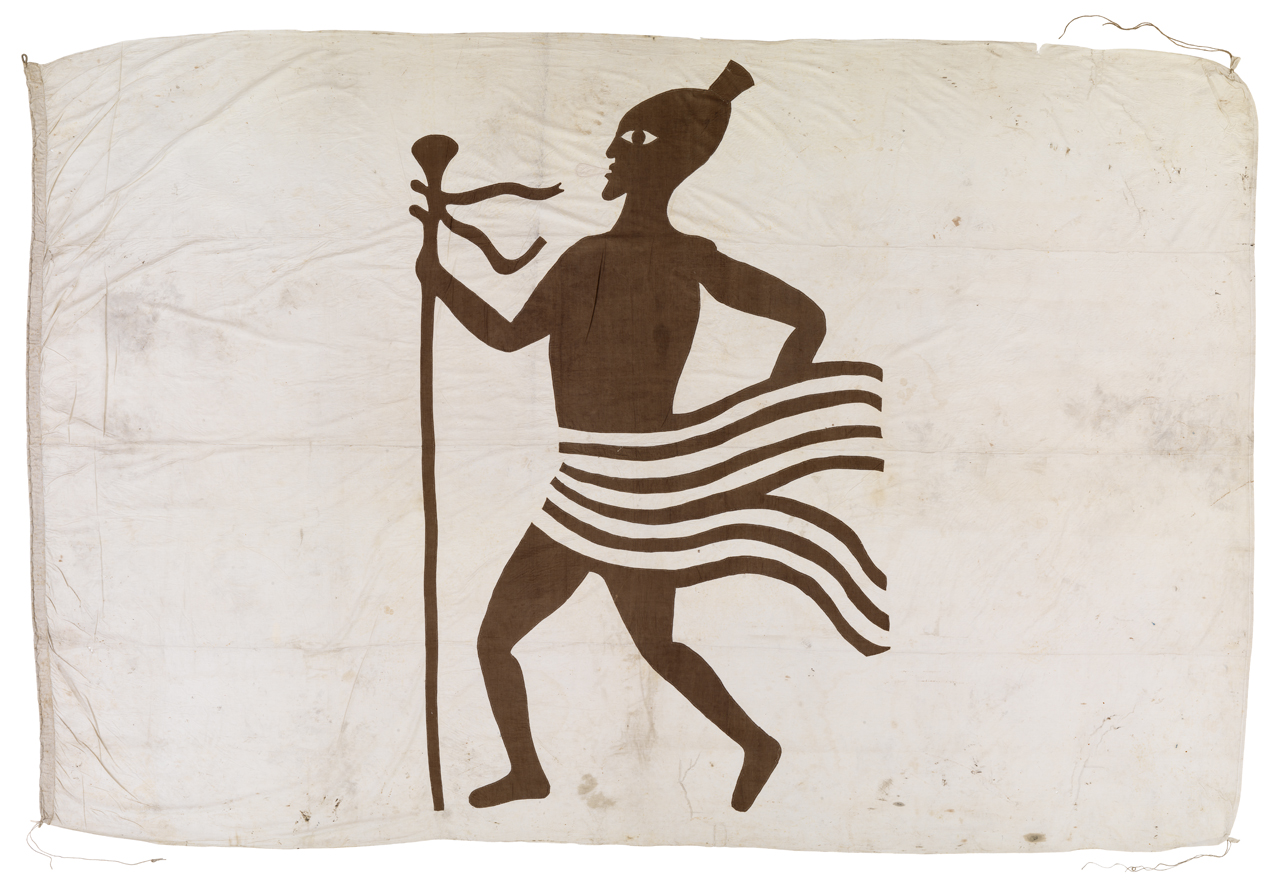
Flag of an African Slaver. It is appliquéd with a figure of an African, holding a staff, in brown fabric. His garments and the ribbons on the staff are fluttering in the breeze, mirroring the wind blowing out the flag. The figure is shown with a protruding tongue. Inscribed on an associated paper label: ‘Flag taken from a slaver captured off the east coast of Africa & sent to my father (W H Wylde of the Foreign Office) by Commodore Eardley Wilmot.’ William Henry Wylde (1819-1909) was a superintendent of the Commercial, Consular and Slave Trade departments of the Foreign Office 1869-80 and was a member of the commission which sat in London, 1865, to revise Slave Trade Instructions. Arthur Parry Eardley Wilmot (1815-1886) was employed in anti-slavery operations off West Africa— in Harlequin 1850-53 and as Commodore in Rattlesnake 1862-66. He was promoted to flag rank in 1870. His naval career ended shortly afterwards when his ship Agincourt struck a rock near the bay of Gibraltar. William Wylde’s involvement with anti-slavery operations continued into the 1870’s when the British moved to suppress the trade in Zanzibar.
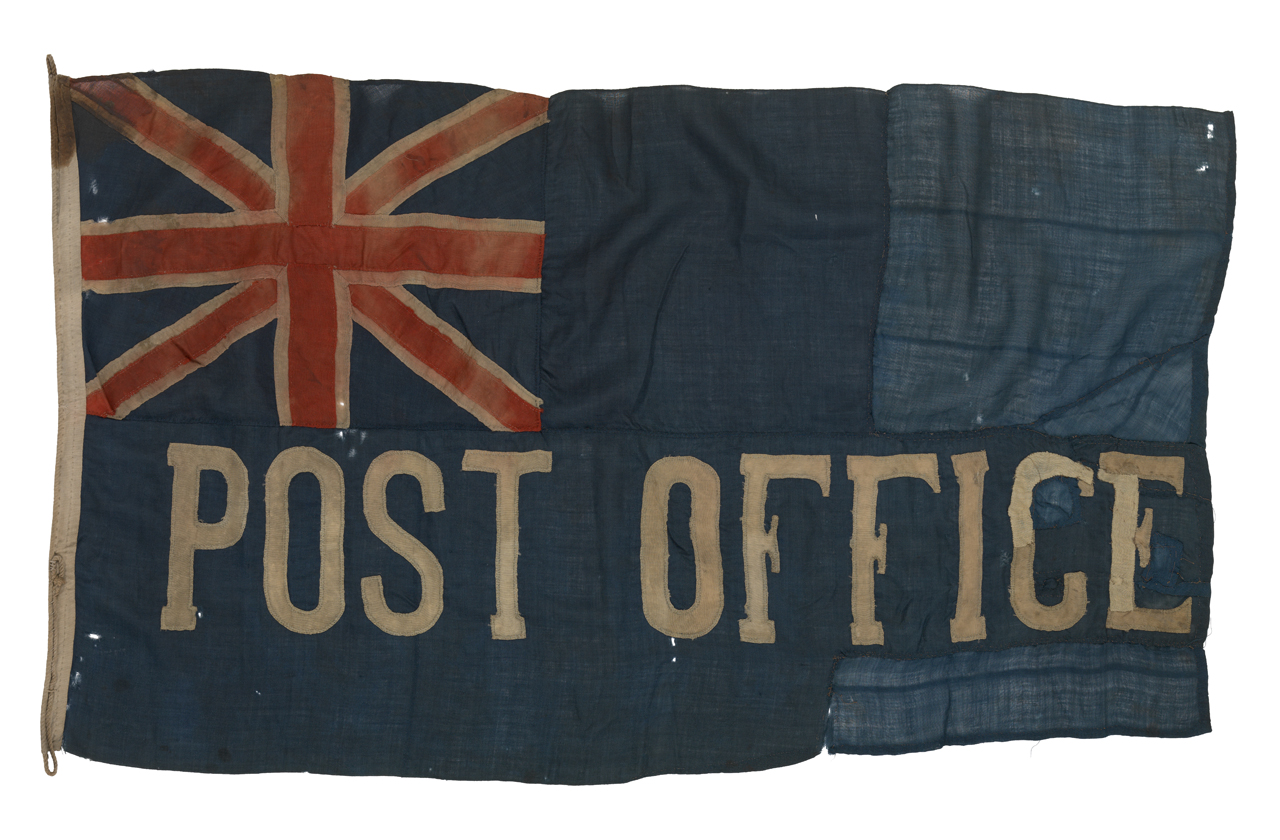
Post Office Blue Ensign. In 1837 the General Post Office employed a steam boat to collect mail from sailing vessels ‘detained in the entrance to the English Channel, either by contrary winds or calms’ and landing them in the first convenient port. The steam vessel was to be distinguished by a ‘Post Office Blue ensign’. Hand-sewn after 1837.
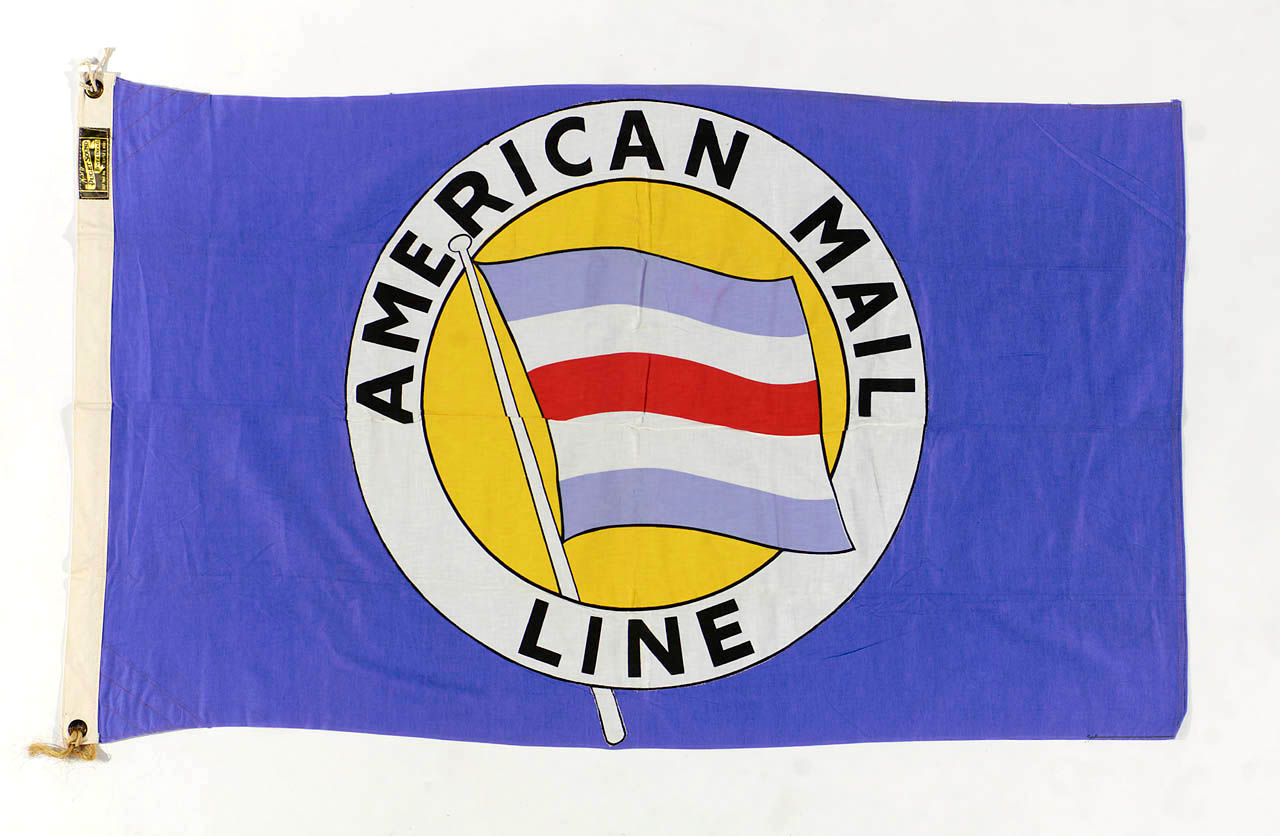
House flag, American Mail Line Ltd. A service between Seattle and the Far East taken over by the government to prevent their bankruptcy in 1938. Following privatization after the war, the company was re-acquired, by American President Lines in 1954. The use of the American Mail Lines name and flag ended in 1973.

The house flag of the India Rubber Gutta Percha and Telegraph Works Co Ltd, London. The company stopped making telegraph equipment around 1930, and eventually became part of BTR Industries (formerly the British Tyre and Rubber Company). Flag circa 1911.
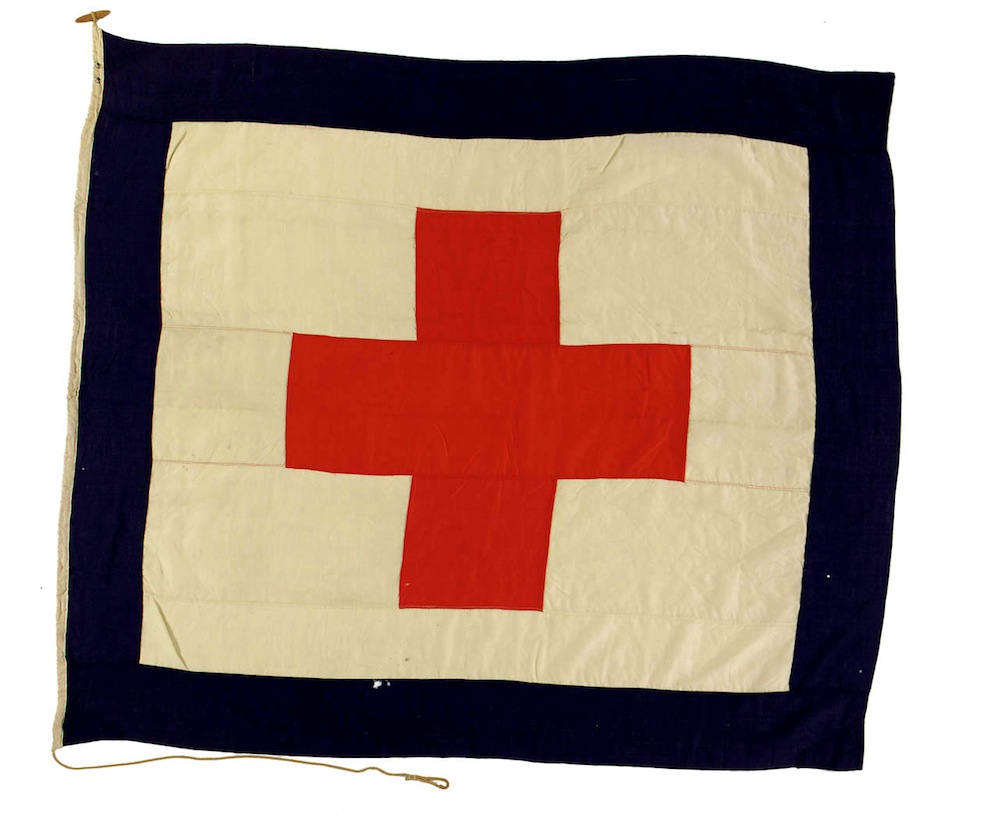
The house flag of Rowland & Marwoods Steam Ship Co., Whitby, which carried mainly coal, grain, timber, and cargo from Europe to Australia, South America, Cuba and Canada. During the first two years of the Second World War the Battle of the Atlantic took almost all of the company’s fleet. The company continued trading in the post-war period, but, despite new vessels of larger size being bought in 1956 and 1962, the ‘Runswick’ and the ‘Egton’, the world economic climate proved unfavourable to small-scale cargo enterprises and in 1985 the company went into voluntary liquidation.
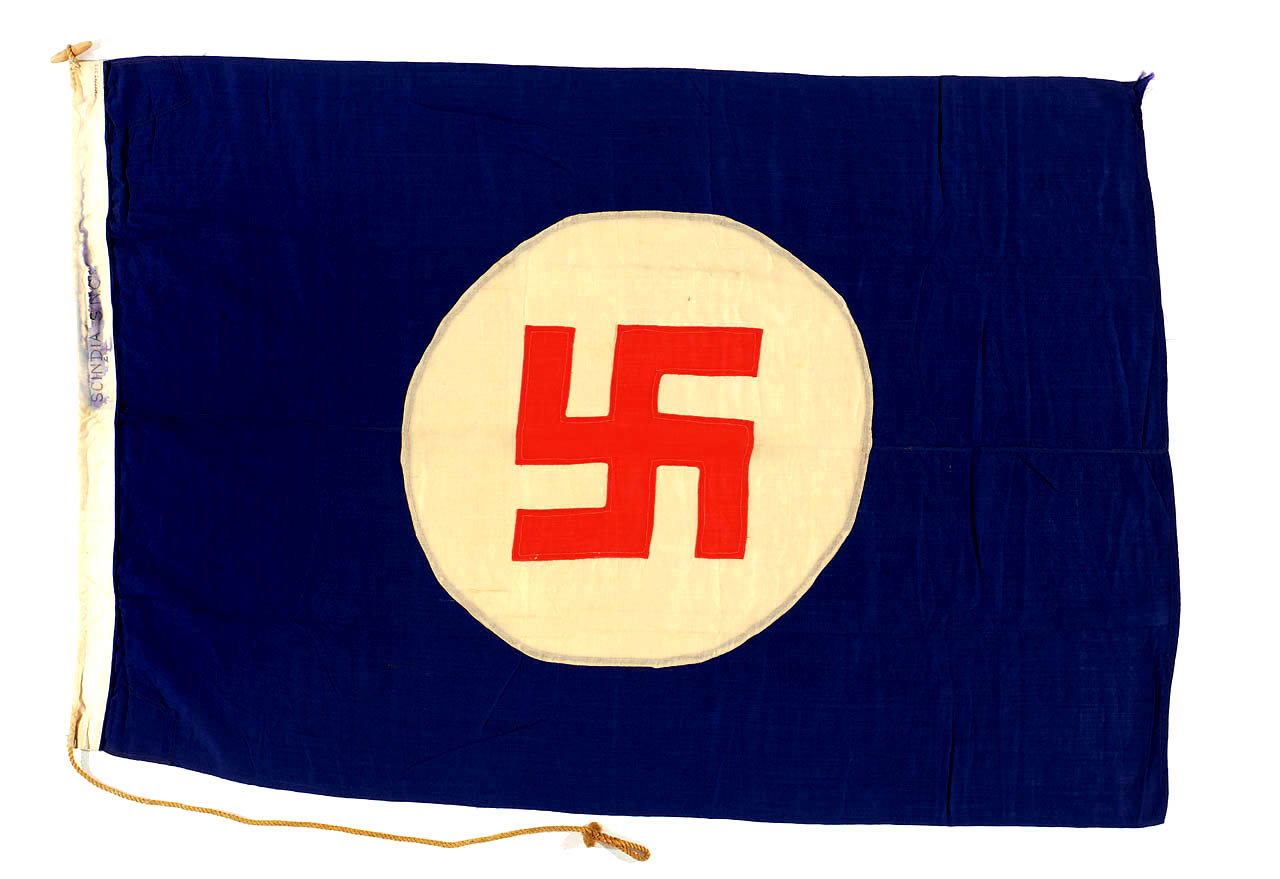
House flag, Scindia Steam Navigation Co. Ltd. A rectangular blue flag with a white disc in the centre bearing a red swastika which is an ancient Hindu emblem of luck. Following the global slump in the 1980s Scindia ceased trading.
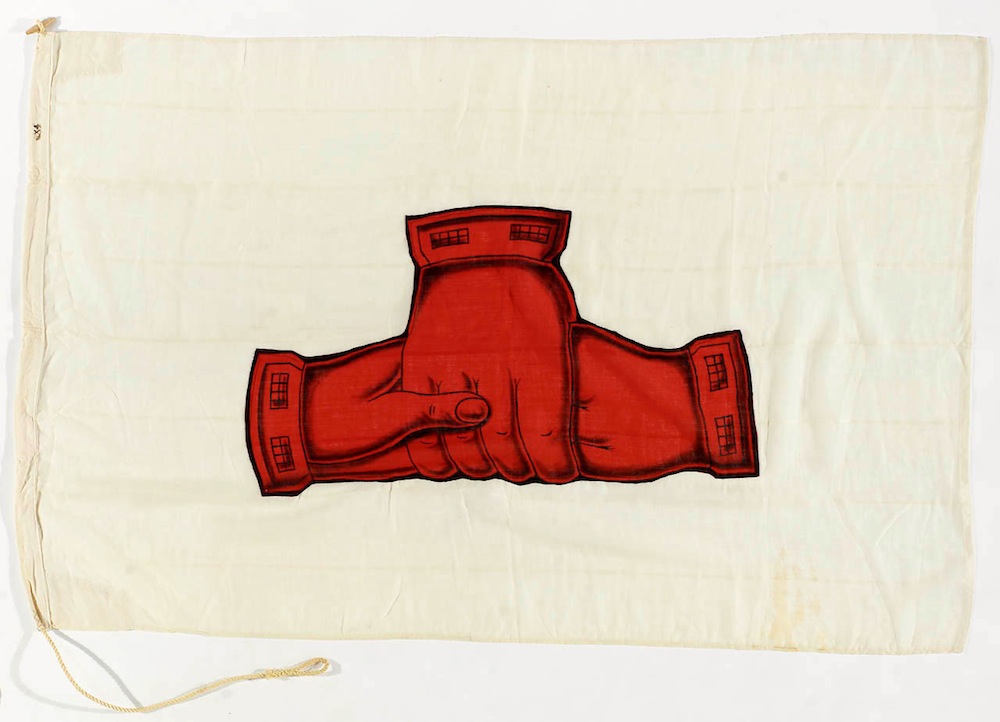
The house flag of the Larrinaga Steamship Co. Ltd, Liverpool.
The flag is said to represent a hand shake between the three partners confirming the decision to run steam services through the Suez Canal or alternatively the three Basque families who founded the firm – Olano, Larrinaga and De Longa. The design was in use from the 1860s until 1974.
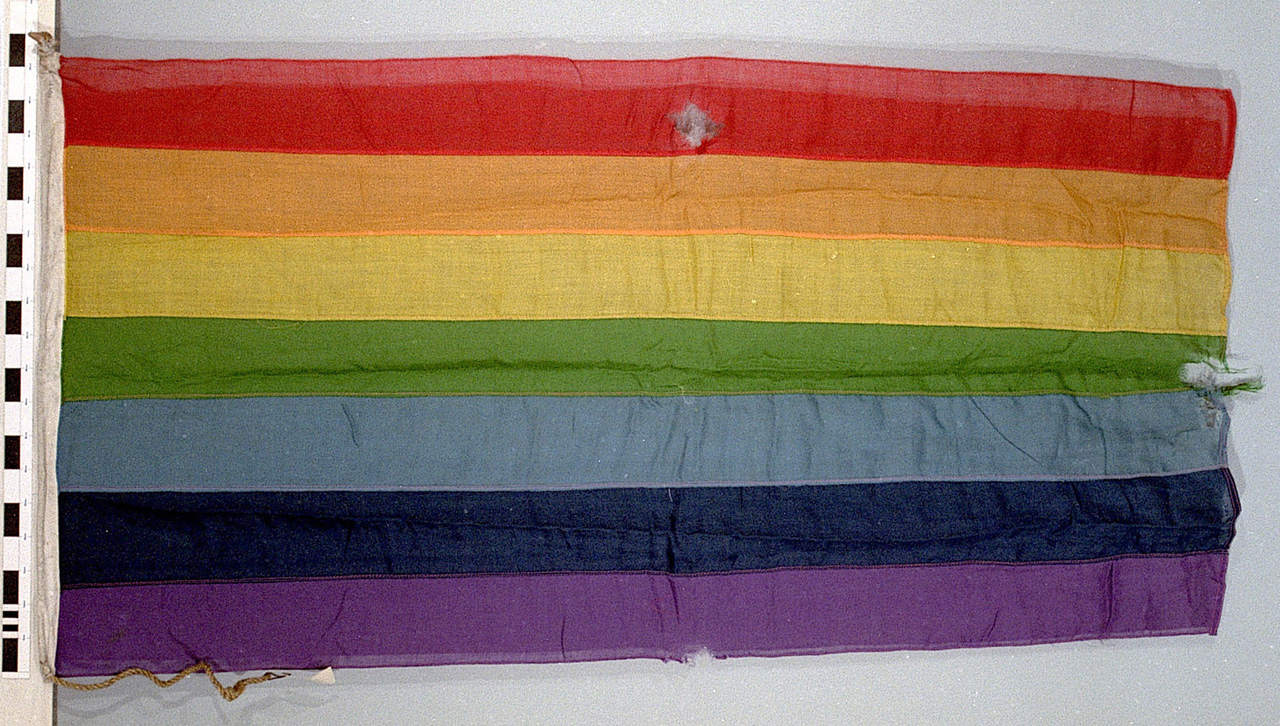
Flag of the Co-operative Movement. The rainbow flag has been the cooperative emblem since 1921 when the International Co-operative Congress of World Co-op Leaders met to identify and define the growing cooperative movement’s common values and ideals to help unite co-ops around the world. this flag is a symbol of hope and peace, unity in diversity and the power of light, enlightenment and progress.
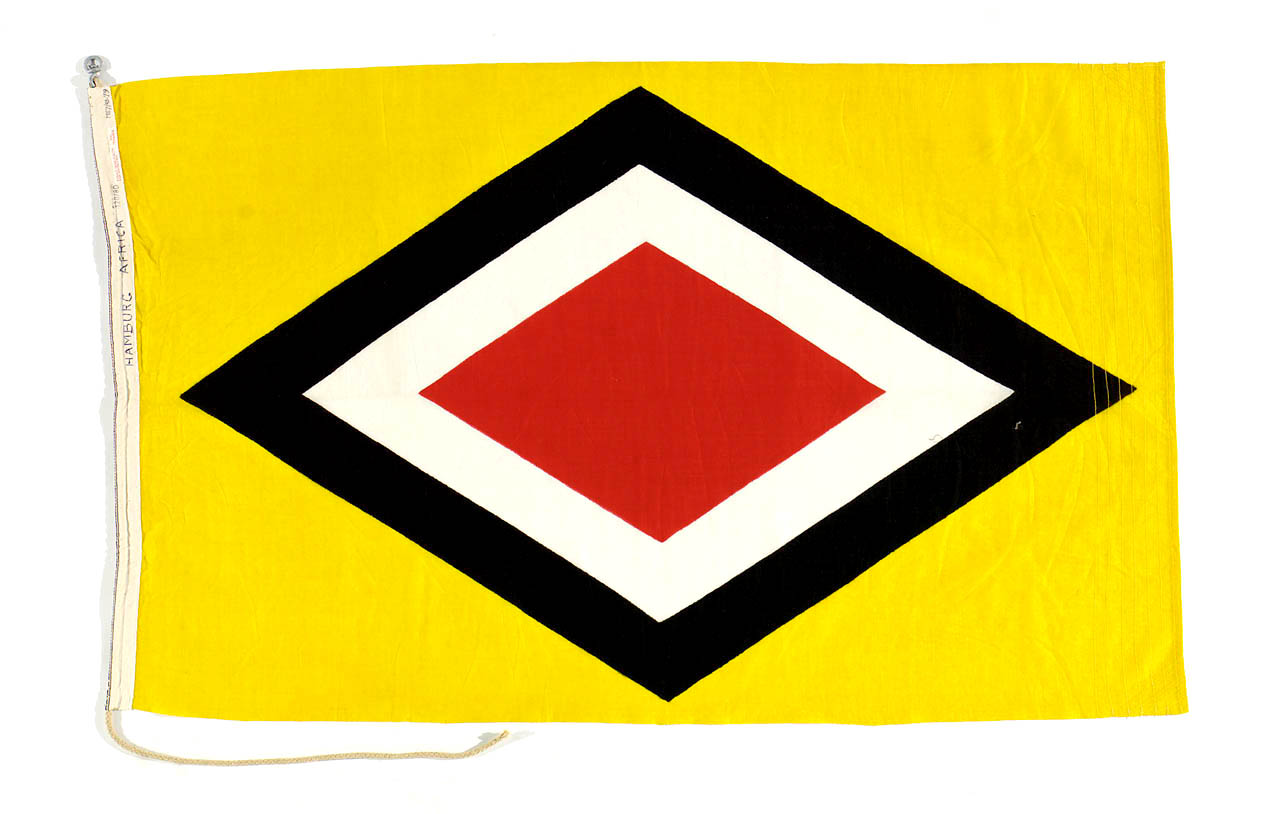
House flag of the Deutsche Afrika-Linien. The company began its services in 1890 to provide direct services for passengers, mail and cargo to East Africa. It is today part of a group owned by the same family and runs a liner service to Southern Africa and container services to East Africa and the islands of the Indian Ocean.
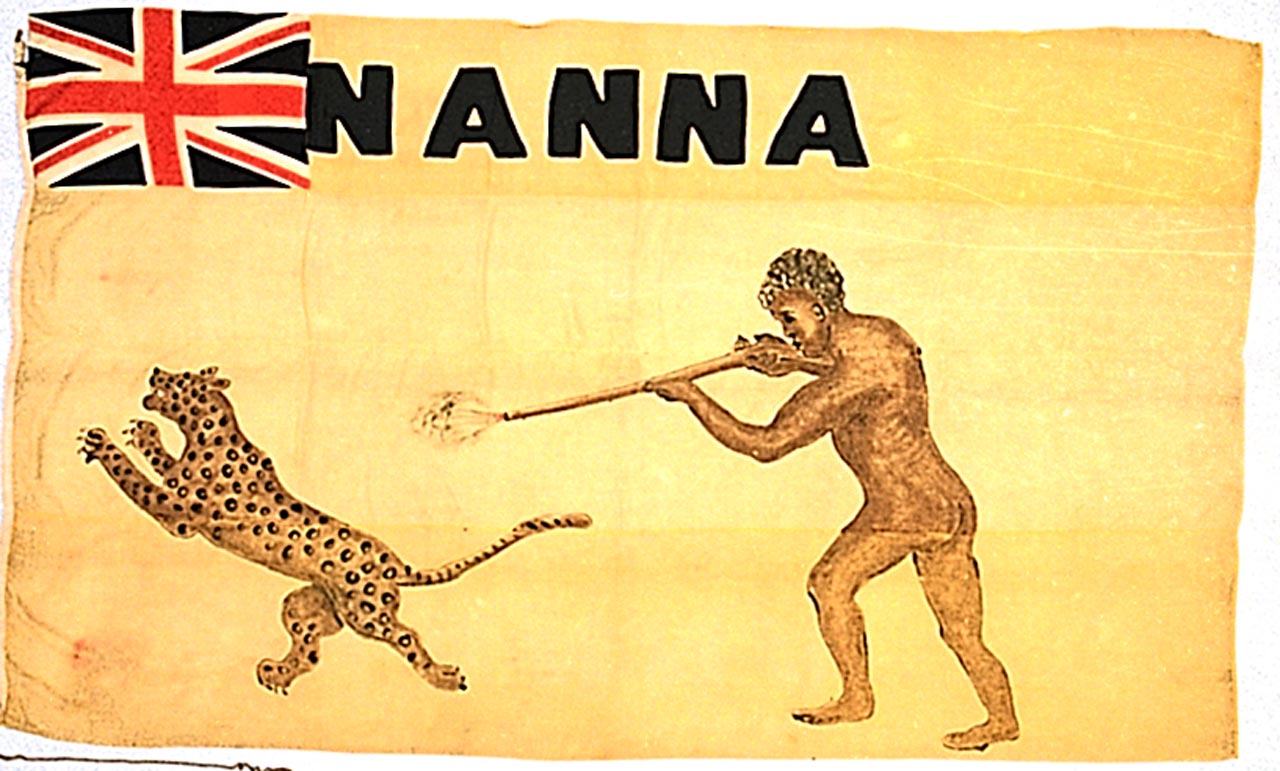
Itsekri Flag, the personal flag of Itsekiri chief Nana Olomu (1852-1916). The flag was captured during the expedition of 1894. The title of ‘Governor of Benin River’ was given to Nana Olomu by the British in 1884. He exerted immense political power through a network of armed traders in palm oil working along the upper reaches of the river and he built a town in the mangrove swamps defended by flintlock guns and brass cannon. Following an attack on HMS Alecto’s cutter which was inspecting Nana’s fortifications, a British naval expedition captured Nanna’s town of Ebrohimi. He fled to Lagos Colony, but was tried and exiled to the Gold Coast from 1894-1906. After his return to Nigeria he lived at the town of Koko.
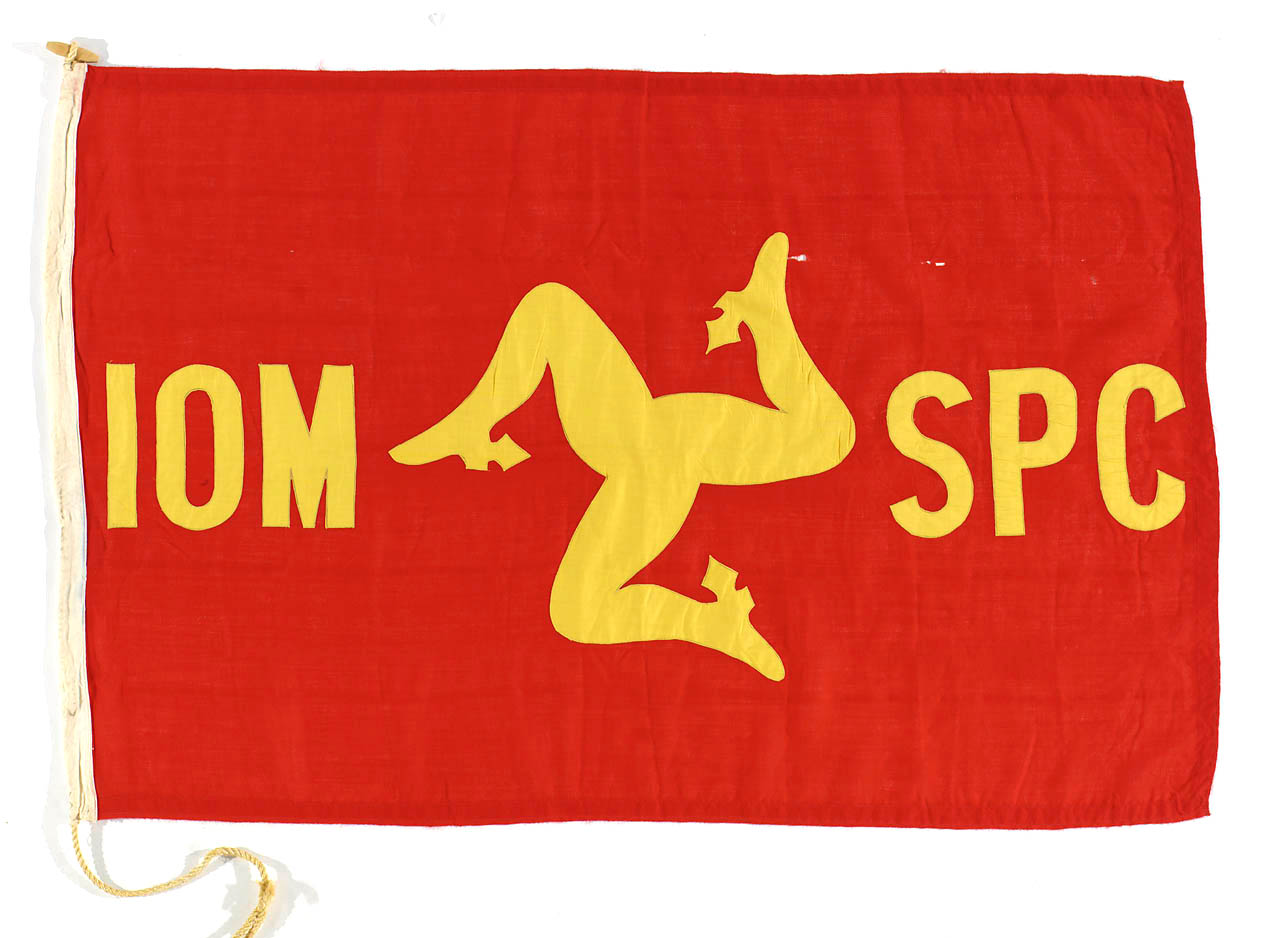
The House flag of the Isle of Man Steam Packet Co. Ltd, Douglas, Isle of Man. The company’s vessels carried passengers, mail and goods between Douglas and Liverpool. Its ships were wooden and then iron paddle steamers which gave way to single, twin and triple-screw steamers, then turbine and diesel powered vessels.

USA national flag, 1912-59 pattern. This flag is one of the flags placed on tables at launching dinners for cargo vessels

The national flag of Brazil, 1822-1889 pattern. The flag has a green background with a white diamond in the centre bearing the arms of the Brazilian Emperor- a green shield bearing an armilliary sphere surrounded by a ring of stars, an Imperial crown above, the whole surrounded by branches of coffee and tobacco tied with a blue ribbon. It was changed when the country became a republic in 1889 to a similar design to the present flag.
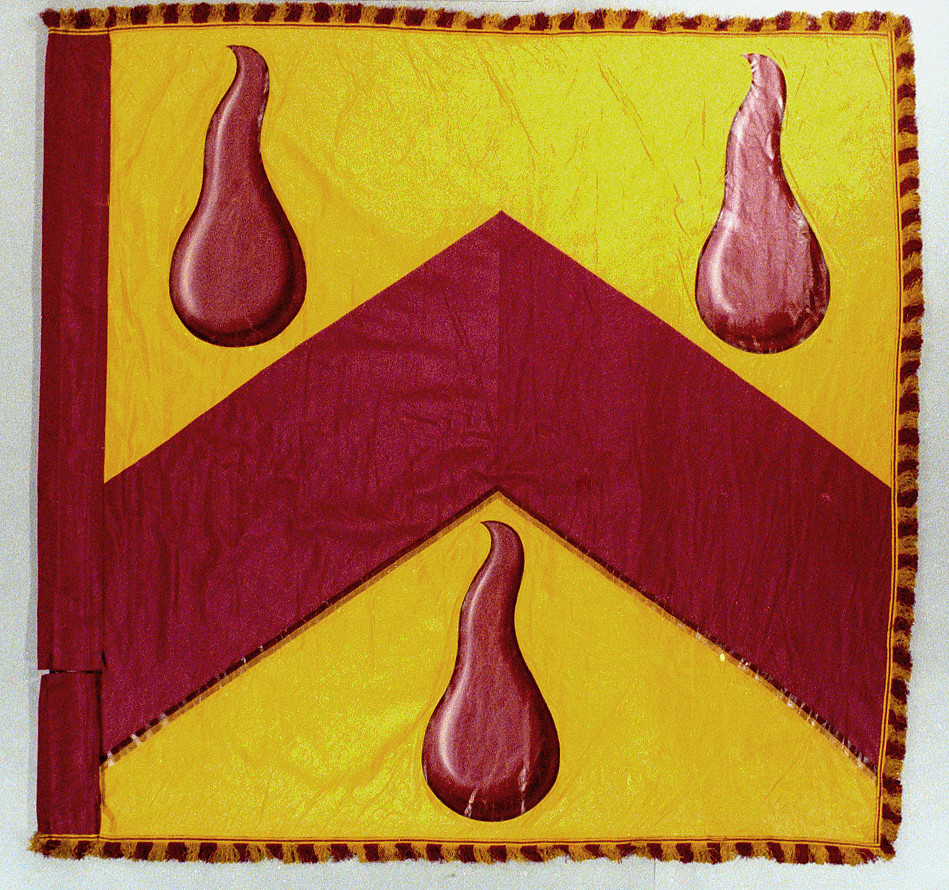
Bath banner, Adm Sir William Goodenough (1867-1945)
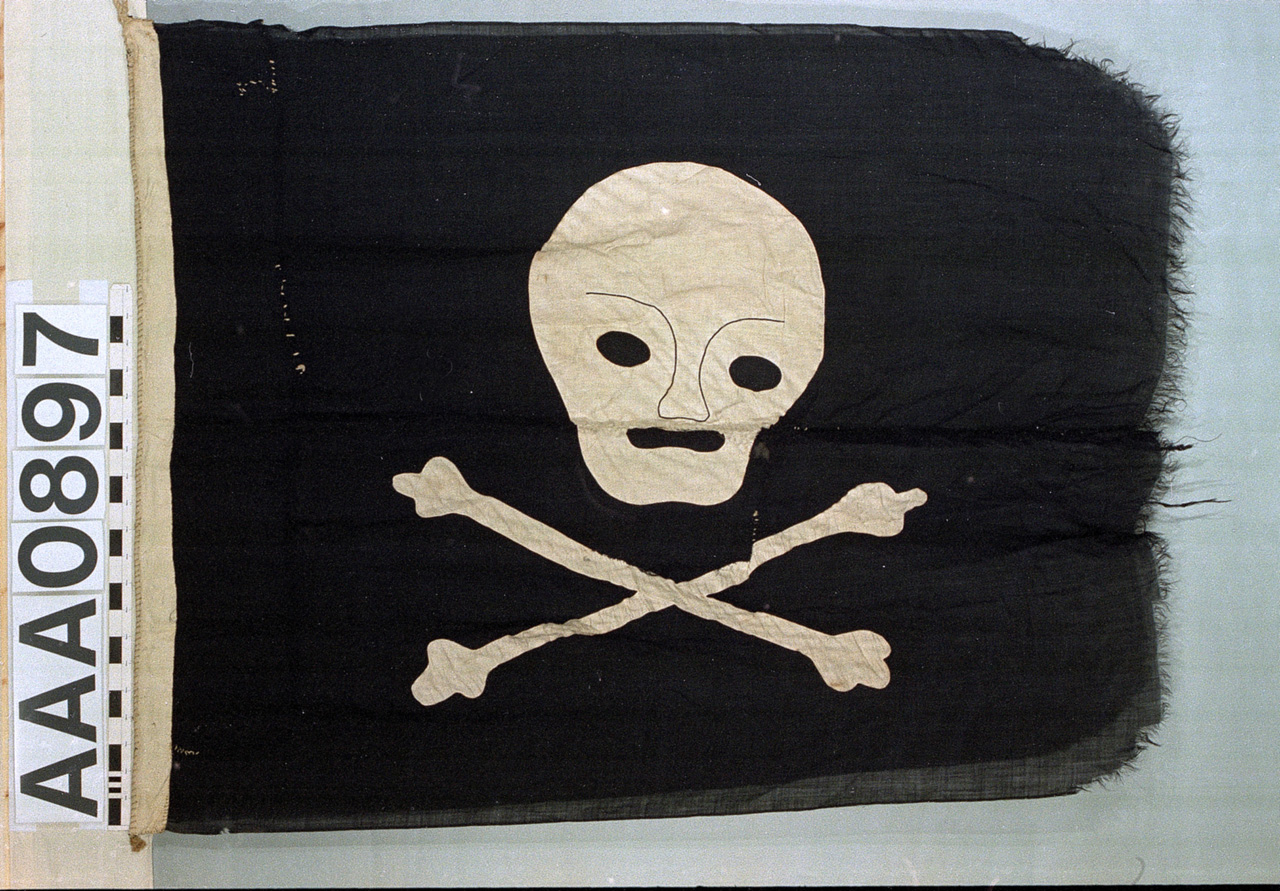
Skull and Cross Bones flag. Made for the film ‘Windjammer’ circa 1962. The crew began flying it before tall ships races. Rival crew members began climbing the rigging at night to capture it until, about 1970, a trainee from a Swedish ship was injured and the flag was given to the STA where the same tradition was repeated. Confiscated by the STA secretary who gave it to the donor.
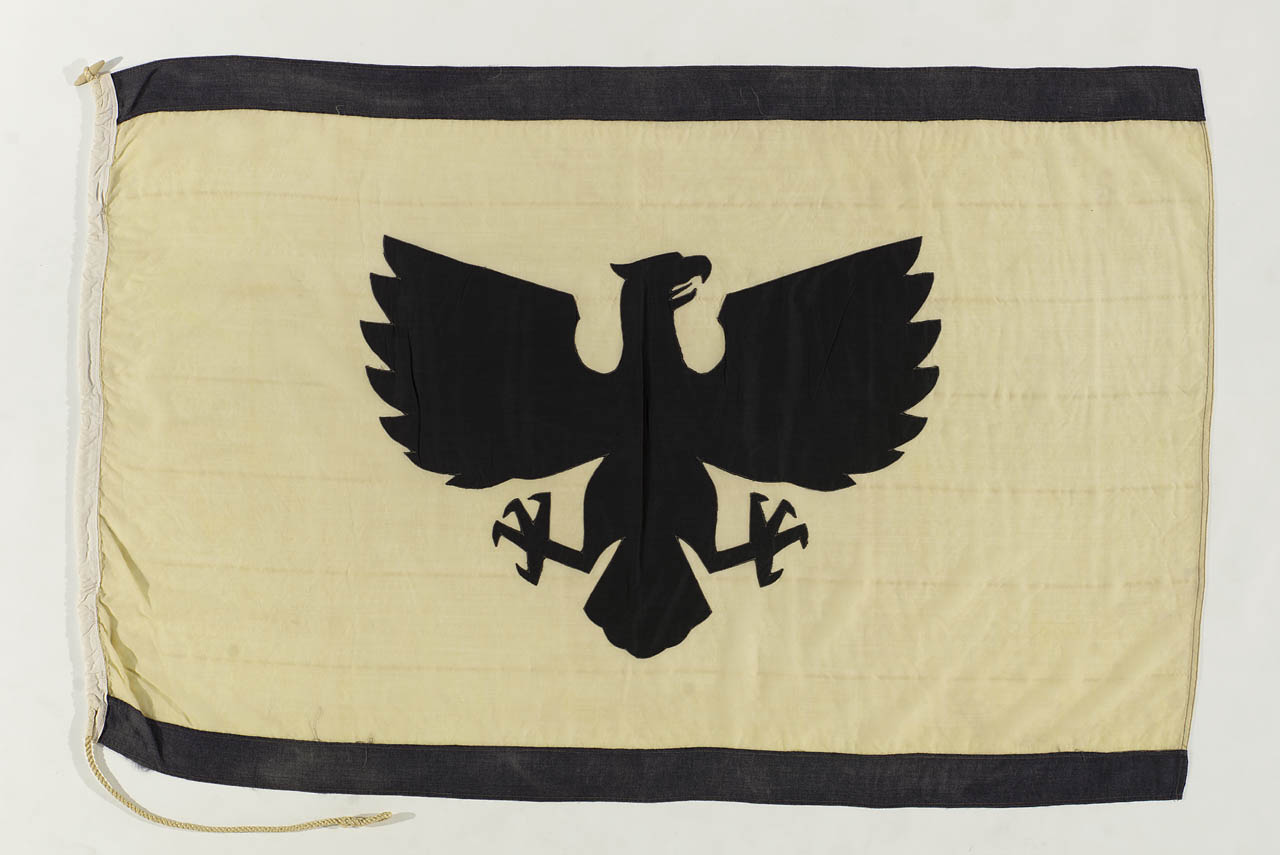
The house flag of Eagle Oil Shipping Co. Ltd, London, 1935-1950. The shipping company was set up to ship oil from the Mexican oil fields to Europe. Their ships were involved in merchant convoys during both world wars. The firm was merged with the Shell International Petroleum Company in 1959 and their livery disappeared.
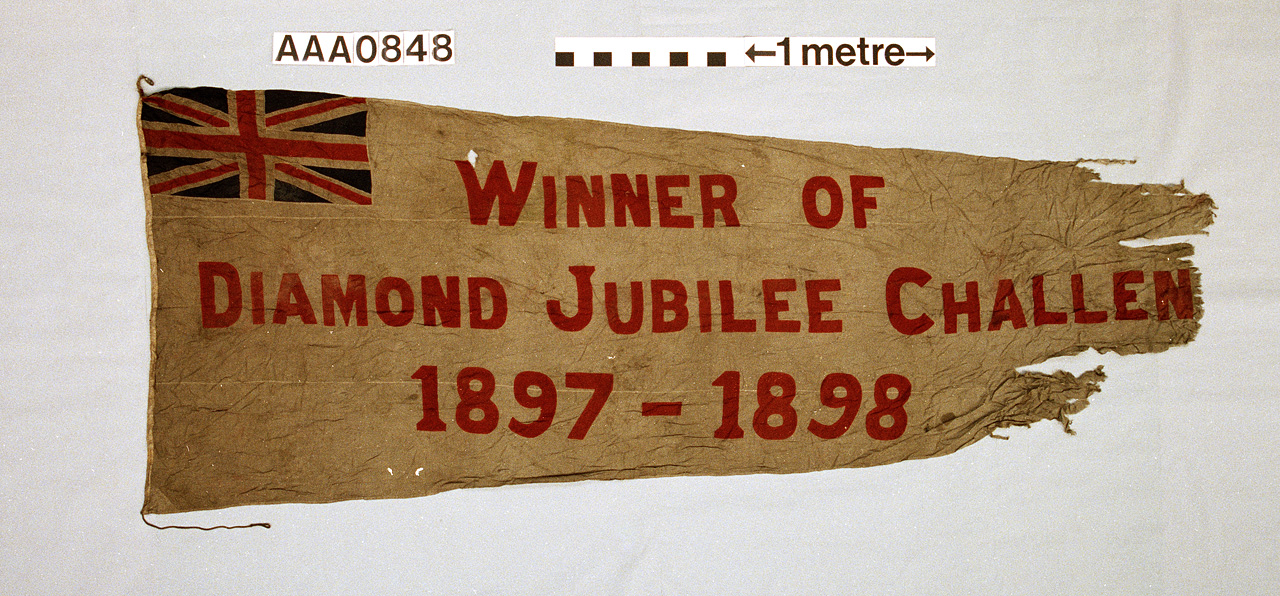
Champion Thames barge pennant in white wool bunting, machine-sewn with red letters ‘WINNER OF DIAMOND JUBILEE CHALEN[GE] 1897-1898’.
Discover the full archive on the Royal Museums Collection.


